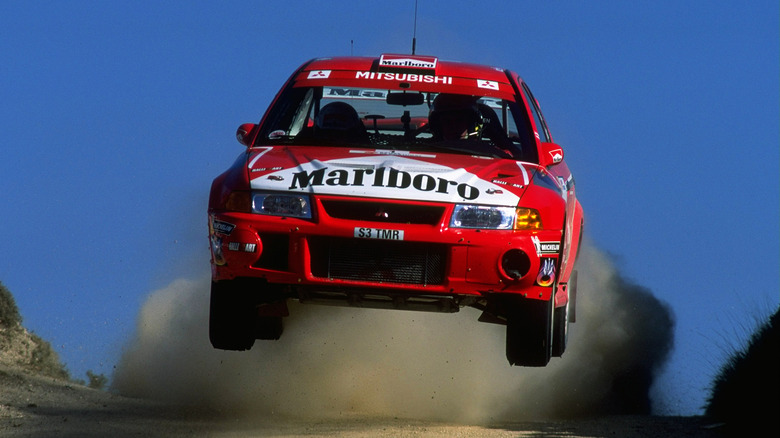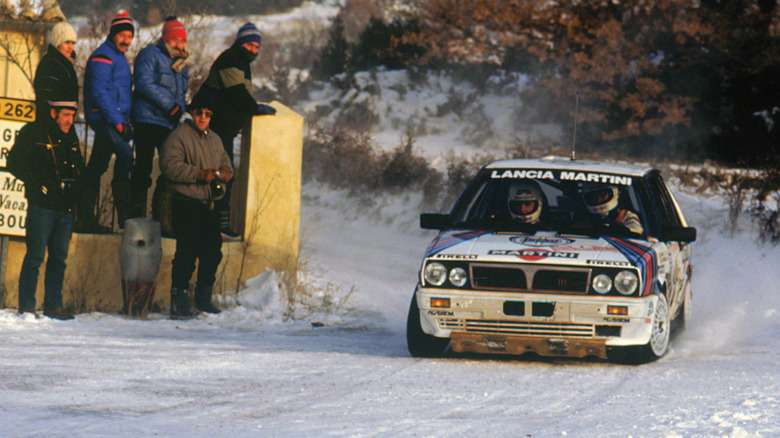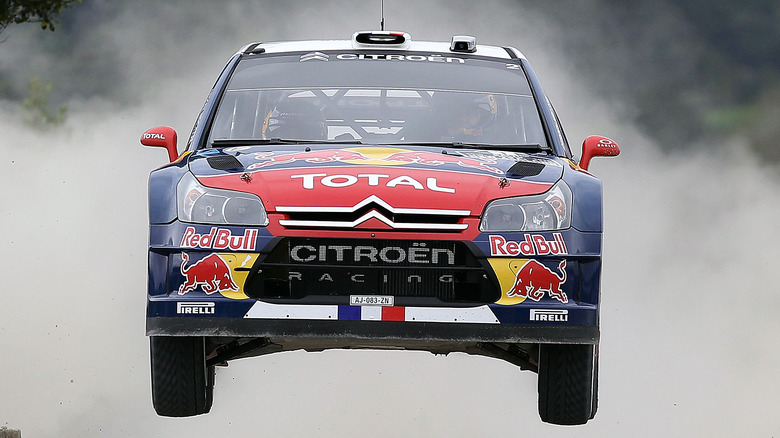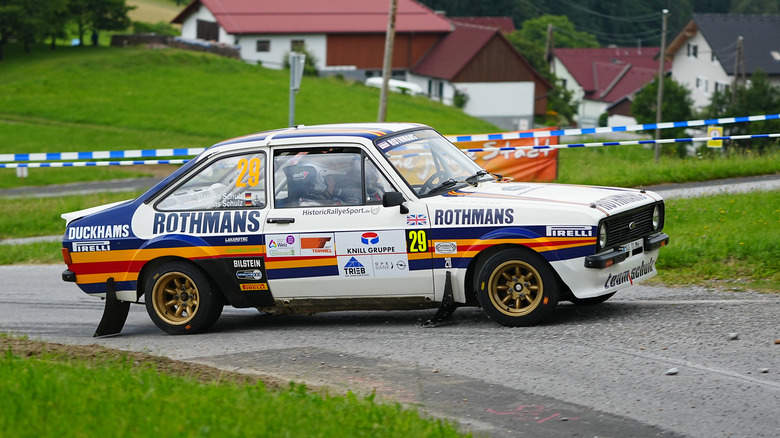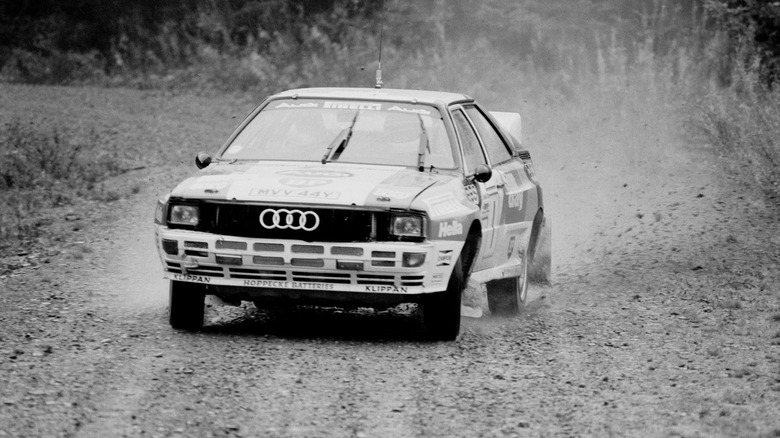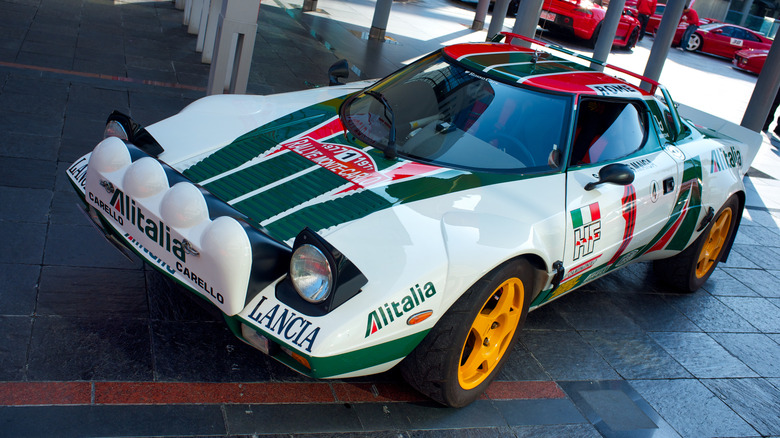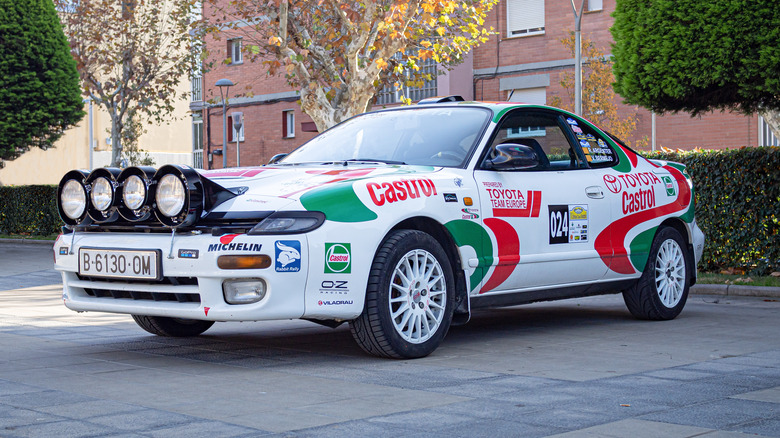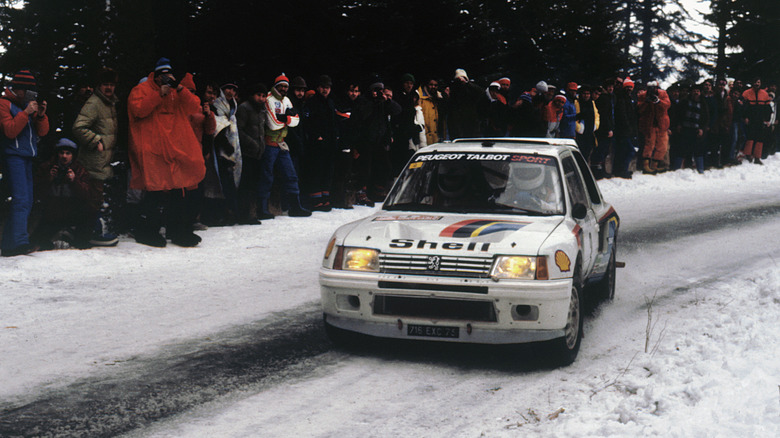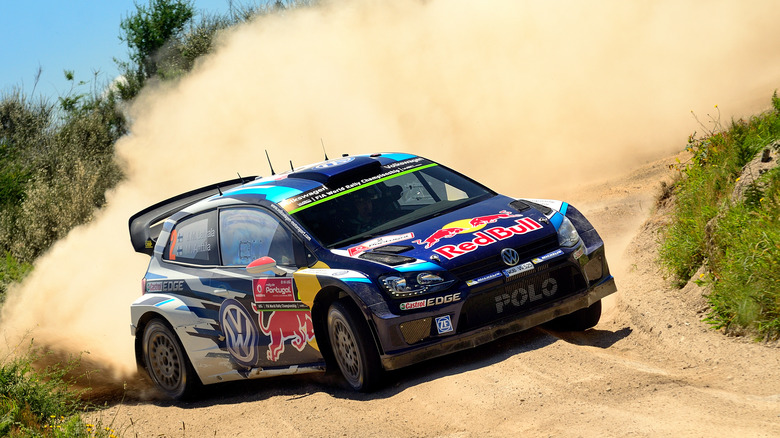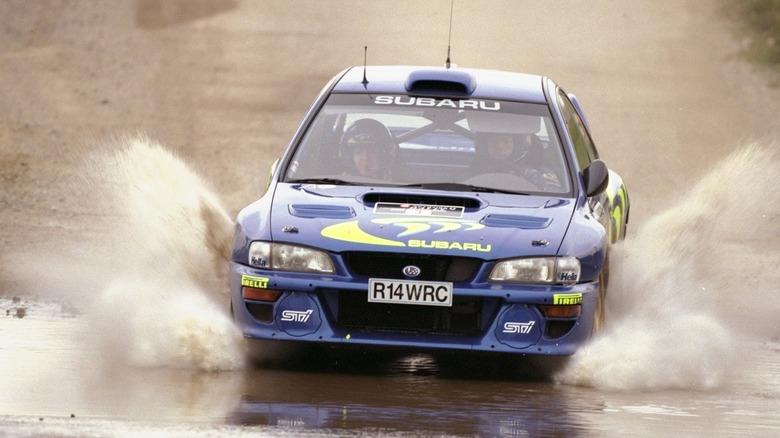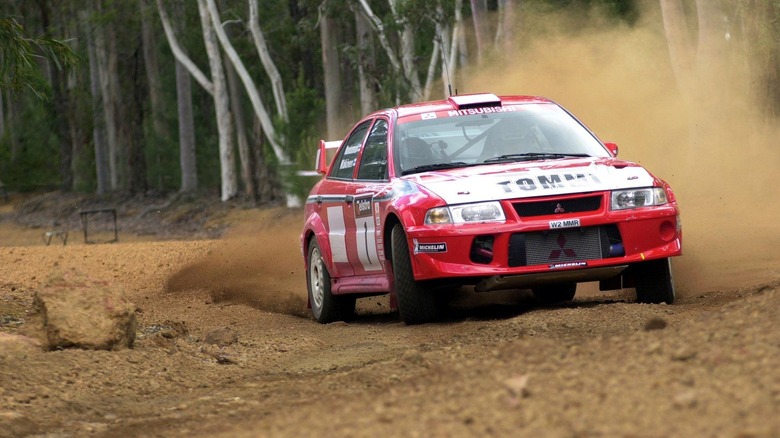10 Of The Most Legendary Rally Cars Ever Made
Since its inception in 1973, the World Rally Championship has been the global top tier of the sport. Its changing rules and regulations have been responsible for producing many of the greatest all-terrain race cars ever seen, with every era of rallying seeing a new wave of motorsport icons unleashed. From the wild, dangerous days of Group B to the latest era of hybrid Rally1 cars, the WRC has seen so many incredible cars that trying to pick the best is a very tricky task.
As the first race of the 2023 season kicked off in Monte-Carlo on the 19th of January, it's a great time to take a look back through the archives at some of the sport's most iconic machines. To make it into our top 10, each car needed to be not only successful in terms of the number of rallies won, but also stand as one of the defining cars of its era in rallying folklore.
Lancia Delta HF Integrale
In pure numbers, the Lancia Delta HF Integrale is the most successful rally car ever. It won Lancia six consecutive manufacturers' world titles between 1987 and 1991, four drivers' titles, plus the drivers' title in the Group N support class of the Championship in 1987. After Lancia's factory team pulled out of the series at the end of 1991, a privateer team, Martini Racing Delta, continued to race the car and took another Constructors' title in 1992 (via Red Bull).
The car was originally developed in response to the axing of Group B, with Group A becoming the top class in the Championship from the 1987 season onwards. Lancia got a bit of a headstart on its competitors as it already had most of the components needed for the rally car in production — the engine was borrowed from the Thema Turbo, for example, and the 4WD system was derived from the production Prisma 4WD. Four iterations of the Integrale were raced during the car's time in the WRC, each with minor tweaks and improvements over the last. The car's mechanical superiority, combined with the talent of drivers like Juha Kunkkunen and Miki Biasion, meant that Lancia simply couldn't be matched during those glory years.
Citroën C4 WRC
The Lancia Delta might be the most successful car in WRC history, but arguably the most successful partnership ever is that between Citroën and Sébastien Loeb. After originally signing the Frenchman as a junior driver in 2001, where he won the JWRC title, Citroën promoted Loeb to the top tier of the WRC in 2002. He won his first Championship event later that year and won the drivers' title for the first time in 2004. This began a run of absolute dominance, with Loeb winning the title for nine consecutive years, until he left Citroën and retired from full-time WRC racing in 2012. He remains the sport's most successful driver ever.
While Loeb's first few wins were in a Citroën Xsara WRC, he took the most titles driving a Citroën C4 WRC. The C4 WRC proved itself to be exceptionally dominant on asphalt, winning every single asphalt rally it entered over its four-season lifespan between 2007 and 2010 (via Evo). Very few race cars in motorsport history have ever been that unbeatable. There is an argument to be made that the C4 WRC, and Citroën's rally team overall, could never have been as successful without the incredible talents of Loeb, and vice versa. Whatever the reason for its success, however, it's hard to argue with the C4 WRC's absolute supremacy throughout its competitive life.
Ford Escort RS 1800 MkII
The Ford Escort RS 1800 MkII won just one drivers' Championship title at the hands of Ari Vatanen in 1981, but its success quickly enshrined it into rally folklore. Vatanen took three victories that year, at the Acropolis Rally, Rally of Brazil, and the 1000 Lakes Rally, despite fresh competition from the 4WD Audi Quattro (via National Motor Museum). The Escort could only send power to its rear wheels, but it proved to be highly competitive nonetheless, and in fact, was one of the last winning RWD rally cars before 4WD became the new standard.
The car's racing success, combined with the production version's immense popularity in markets like the United Kingdom, Australia, and New Zealand, has meant that restored examples fetch consistently high prices today (via Silodrome). They're still a favorite among classic rallying enthusiasts, and they still crop up at rally events all over the globe. The car might not have been able to keep up with the monstrous Group B cars that defined the next generation, but the superior handling and excellent reliability of these iconic classics have meant they're still very much competitive even 40 years after they originally debuted.
Audi Quattro
One of the key reasons the Escort was eventually left behind was the emergence of the Audi Quattro, a car that was pivotal in defining the future of the sport. Some would argue that it's the most iconic rally car of all time, as it demonstrated that not only was 4WD a feasible option for a rally car but the superior one in terms of performance. Straight out of the gate, the WRC car proved to be a winner, with Michèle Mouton taking it to victory at Rallye Sanremo in 1981. In doing so, she became the first woman to ever win a world championship rally.
The Quattro also clinched the drivers' Championship titles in 1983 and 1984 at the hands of Hannu Mikkola and Stig Blomqvist respectively, and the manufacturers' titles in 1982 and 1984 (via Snaplap). Its competitive life was cut short with the abolition of Group B in 1986 after a series of fatal accidents meant that regulators felt the cars were too unsafe to continue competing.
Lancia Stratos HF
Despite a few brief flirtations with the sport, Ferrari has never had much luck in rallying. However, a Ferrari-powered car has won the constructors' Championship multiple times, and became one of the most dominant cars in the earliest days of the WRC. The Lancia Stratos HF boasted a Ferrari V6 engine borrowed from the Dino 246, and paired it with one of the wildest exterior designs of any rally car ever made. The unique wedge shape of the Stratos HF was penned by none other than Marcello Gandini, the man responsible for designing the iconic Lamborghini Miura, among many others.
The Stratos' angular design was radically different from anything that had made its way to a rallying start gate before, and it proved to be a highly effective stage-winner. It won the manufacturers' title from 1974 to 1976, and also clinched the inaugural drivers' championship title in 1977 with Sandro Munari at the wheel.
Toyota Celica GT-Four ST185
Toyota is currently proving itself to be the team to beat in the WRC, winning four consecutive drivers' titles between 2019 and 2022 and the manufacturers' title in both 2021 and 2022. Long before its current successes, however, Toyota emerged as a force to be reckoned with in the first half of the 1990s thanks to the Toyota Celica GT-Four ST185. It became the first rally car to win three consecutive drivers' titles between 1992 and 1994, and remains the only one to do so with three different drivers, according to Motorsport Magazine.
Carlos Sainz, Juha Kankkunen, and Didier Auriol all took the crown while driving the ST185, proving it to be not only incredibly competitive but also one of the most versatile rally cars ever made. True to Toyota's reputation, the car's reliability was unbeatable, and its sturdiness no doubt gave its drivers an advantage over their competitors. Unfortunately, Toyota was caught cheating in 1995 with the ST185's successor, the Celica ST205, and banned from the WRC for the 1996 season. The scandal put an abrupt end to the Celica's record-breaking run and sullied what was otherwise an impeccable legacy.
Peugeot 205 T16
One of the most instantly recognizable of the Group B competitors, the Peugeot 205 T16, won two drivers' Championship titles in 1985 and 1986 for Timo Salonen and Juha Kankunnen respectively. The car won 16 rounds of the World Rally Championship in total, and alongside the competition car, 200 road-going examples were also sold for homologation purposes (via RM Sothebys). Although it shared its name with the humble 205 hatchback, the rally car was almost completely purpose-built and shared very little in common with the car available to the public in dealerships.
Although the 205 was not involved in any of the most serious crashes in the 1986 season, its fate was sealed when Group B was axed after being deemed too unsafe by the FIA. Peugeot pulled out of the series the following year after deciding not to enter a car under the new Group A regulations, and it would take until 1999 for the company to re-enter the top flight of the sport with the 206 WRC.
Volkswagen Polo R WRC
After an initial, unsuccessful, attempt at entering the WRC in 1990, Volkswagen launched its first proper factory team effort in 2013. Its hopes were pinned on the Volkswagen Polo R WRC, which had reportedly spent two years in development and testing before it made its competitive debut. Volkswagen had left nothing to chance, and the Polo R WRC quickly set about proving its capability with hotshot driver Sébastien Ogier behind the wheel.
It appeared to be unstoppable, claiming 43 wins from 52 rallies, a winning percentage that remains unbeaten to date (via Snaplap). Ogier won the drivers' title that year, and then won again for three consecutive years until VW's cost-cutting in the wake of the Dieselgate scandal saw it withdraw from the series. If it hadn't been for VW's withdrawal, it's likely that the Polo R WRC could have racked up even more victories, especially since Ogier went on to win the drivers' title a further four more times with Ford and Toyota before retiring at the end of the 2021 season.
Subaru Impreza WRX
The acronym "WRX" in the Impreza's name stands for "World Rally Experimental," and as soon as it launched at the World Rally Championship in early 1993, it was clear that this new experiment was going to produce some very good results. It also marked the beginning of a rivalry that defined an entire era of rallying, with Subaru going toe-to-toe with Mitsubishi for the next decade. The WRX won three consecutive manufacturers' titles between 1995 and 1997, also winning the drivers' title in 1995 with Colin McRae.
McRae and his long-time rival, Tommi Mäkinen of Mitsubishi, would duke it out over the following seasons, but unfortunately for the Scotsman, he never managed to finish a season on the top spot of the podium after his initial victory. However, the story wasn't over for the WRX, with later iterations of the car going on to win drivers' titles in 2001 and 2003 thanks to Richard Burns and Petter Solberg.
Mitsubishi Lancer Evolution
The other half of the Mitsubishi-Subaru rivalry, the Lancer Evolution in its various forms came to dominate the WRC standings throughout the late '90s. Mitsubishi claimed four drivers' titles with the Evo III, IV, V, and VI with Tommi Mäkinen at the wheel, topping the table consecutively from 1996 to 1999. The team also won a manufacturers' championship in 1998. The 1997 season was a particularly close-fought one for Mäkinen in the Evo, as he only won by a single point following a stunning comeback from Subaru's McRae in the latter half of the season.
Mitsubishi's competitiveness waned after the 1999 season, with a string of retirements and a disqualification forcing Mäkinen out of the podium positions in 2000. Nonetheless, Mitsubishi continued to develop new generations of the Lancer, until 2005, when executives decided to pull out of the series to focus more funds on the Dakar rally, where the company was seeing considerable success (via Mitsubishi). It brought to an end to one of rallying's most high-profile rivalries, and tellingly, although Mitsubishi has never re-entered the series, it continued to market its rallying heritage for years after. Even when it axed the road-going Lancer Evolution altogether in 2015, Mitsubishi couldn't resist putting together one last special edition tribute to the motorsport that had shaped its identity for so many years. Despite repeated calls for Mitsubishi to return, however, there appear to be no plans for the brand to come back to the WRC.
